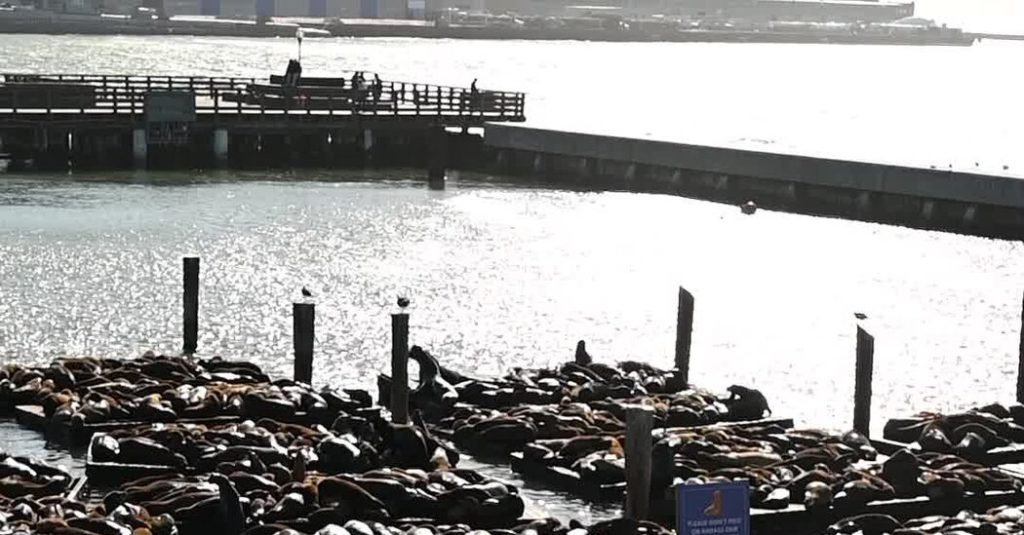Since the beginning of the pandemic, the city of San Francisco has seen a decline in human visitors, but an increase in the number of sea lions swimming to the area. Sea lion counters at Pier 39 have tallied a record number of 2,000 sea lions, surpassing the previous record set in the early 1990s. This surge of sea lions has been described as “truly remarkable” by experts, with every dock full and the sound and smell of the sea lions making for an unforgettable city soundtrack. The animals were initially drawn to the area by a large school of anchovies, but it is unclear what has kept them around. Tourists and locals flock to the area to witness the spectacle of over 2,000 sea lions congregating together.
Pier 39, a popular tourist spot in San Francisco, has become overrun with sea lions, as there is not enough space for all of them on the wooden floats intended to serve as a rest stop for the mammals. Sea lions have taken to lounging on docks farther away, causing damage and inconvenience to the area. Despite the challenges posed by the large number of sea lions, visitors like Julian De La Cruz and Erica Schmierer have expressed their admiration for the sea lions, viewing them as an iconic part of San Francisco and California. The presence of the sea lions has been a welcome sight for many in the city as it struggles to recover from the impact of the pandemic on its tourism industry.
The arrival of the sea lions mirrors a similar event in the early 1990s, following a devastating earthquake in 1989 that brought tourism to a halt in San Francisco. The staff at Pier 39 built wooden floats and an overlook for tourists to view the sea lions, who have been a regular presence at the pier ever since. There are currently around 250,000 sea lions off the coast of California, with most of them breeding in the Channel Islands near Los Angeles. This year, more male sea lions than ever have found a refueling station at Pier 39, while researchers have reported seeing hundreds of dead sea lion pups wash ashore further south, likely due to premature births caused by climate change and rising ocean temperatures.
While the overall sea lion population is considered healthy, researchers are studying the impact of climate change on the premature births of sea lion pups. Warmer water has led fish to swim farther from the sea lions’ breeding grounds, forcing pregnant sea lions to swim longer distances to find food to keep their pups healthy. The presence of the sea lions at Pier 39 has been a positive distraction for San Francisco residents and visitors as the city continues to recover from the pandemic. However, harbor master Sheila Chandor hopes that the numbers of sea lions do not continue to increase, as the pier has reached its capacity and may soon become overwhelmed by the growing population of sea lions.
Overall, the surge in sea lion numbers at Pier 39 has attracted both tourists and locals to witness the spectacle of over 2,000 sea lions gathered in the area. The presence of the sea lions has been a bright spot for San Francisco as it works to recover from the impact of the pandemic on its tourism industry. While researchers study the impact of climate change on sea lion populations and premature births, visitors like Julian De La Cruz and Erica Schmierer continue to appreciate and admire the sea lions as an integral part of the city’s identity. Despite the logistical challenges posed by the large number of sea lions, the presence of these animals has added a unique and memorable element to the city’s waterfront.


